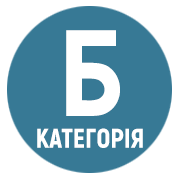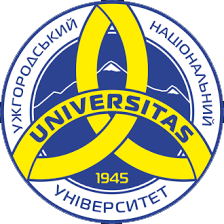MEDICAL AND PSYCHOLOGICAL PROBLEMS IN SPORTS
DOI:
https://doi.org/10.32782/psy-visnyk/2024.4.11Keywords:
physical activity, distraction, self-meditation, sportAbstract
The article shows the possibility of effective treatment of neurosis in rowing athletes directly in training. Purpose of the study: To develop a method of treatment of neurosis (ICD-10: F48.0) for athletes performed during training with the use of a new technique of rowing and autosuggestion. The technique of effective suggestive influence is known, in which it is necessary to divert attention from the problem. In order to attract attention to a sporting action, it is necessary to provide a new technique, one that would be more effective than the one previously used. If we consider sports activities, in them the concentration of attention on the technique is observed during the period of its learning. In that case, when a reflex is formed, the movements are carried out automatically. Distraction of attention from psychotrauma is possible if there is any interest in the action performed. A new technique is proposed for concentrating attention on the performance of rowing, and then the distraction of attention from the disease will allow to carry out high-quality therapeutic self-infusion. The emphasis is not on the technical abilities of the practitioners, but on psychological therapeutic effects. Results. It is graphically shown that crossing the oar handles at the beginning of the rowing cycle increases the thrust force vinikayє on the oar blade, and also reduces drift and, as a consequence, reduces oar skidding, wiring and unproductive work. This allows a rational use of physical forces, which makes it possible to increase the pace of rowing and boat speed. The novelty of this technique, when mastered, diverts attention away from the problem of the disease, which allows successful therapeutic suggestion. The effectiveness of the therapeutic effect of the proposed method is also associated with increased breathing, which depends on physical exertion. Frequent breathing is accompanied by a decrease in carbon dioxide in the blood, but if there is a large physical load, it is replenished. Physical activity with frequent breathing induces a meditative state, which can eliminate pathological foci of the brain caused by nervous system disruptions received during conflicts or stress.
References
Adams R, Ohlsen S, Word E. Eye movement desensitization and reprocessing (EMDR) for the treatment of psychosis: A systematic review. European Journal of Psychotraumatology. 2020. No 11 (1). P. e 1711349. DOI: 10. 1080 / 2000. 8198. 2019.
Ferrari Р., Rizzolatti G. Mirror neuron research: the past and the future. Philos Trans R Soc 1. Lond Biol Sci2014. Jun 5; 369 (1644): 20130169
Gregg E. Gorton, M. D. «Milton Hyland Erickson, 1901–1980». American Journal of Psychiatry. 2005.162:1255
Joseph P. Rhinewine and Oliver J. Williams. Holotropic Breathwork: The Potential Role of a Prolonged, Voluntary Hyperventilation Procedure as an Adjunct to Psychotherapy : [арх. 4 июля 2010]. The Journal of Alternative and Jones. Andrew M.; Jonathan H. Doust. Lack of reliability in Conconi’s heart rate deflection point (англ.). International Journal of Sports Medicine : journal. 1995. Vol. 16, no. 8. P. 541–544. doi:10.1055/s-2007-973051. PMID 8776209.
Holt PJE, Bull AMJ, Cashman PMM, McGregor AH: Rowing technique: The influence of fatigue anteroposterior movements and force production. on International Journal of Sports Medicine 2003;24:597–602.
Kleshnev V. Power in Rowing. in: International Research in Sports Biomechanics. Sanderson B., Martindale W. Towards optimizing rowing technique. Medicine and science in sports and exercise, 18. 1986. Р. 454–468.
Mala,A.,Karkou,V., & Meekums,B.V.Dance MovementTherapy (D/MT) for Depression: A Scoping Review. Artsin Psychotherapy. 2005. No 39 (4). Р. 287–295. doi:10.1016/j.aip.2012.04.002.
Verigo B. F. Zur Frage über die Wirkung des Sauerstoff auf die Kohlensäureausscheidung in den Lungen // Archiv für die gesammte Physiologie des Menschen und der Thiere. 1892. № 51. С. 321–361.






